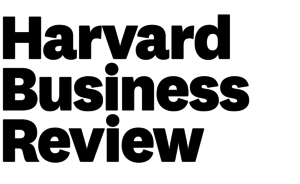Clarify Roles
Description
These resources will help you to translate your company's sustainability commitments into responsibilities that are assigned to appropriate roles and incorporated into personal goal-setting across the business, including the most senior leaders.
Share this Practice on:LinkedIn
Resources
Next-Generation Corporate Responsibility and Sustainability Jobs
As industries embrace and embed sustainability into their planning, processes, and culture, a new imperative has emerged to transition the role and skills - and job description - of CSR and sustainability professionals from an operational to a strategic focus. This briefing provides ideas and examples that can help you to inform and adjust job description updates and performance and professional development plans, and will be particularly helpful for sustainability practitioners and recruitment professionals.
Job Function Action Guides
These practical guides from Drawdown Labs can help you to better understand some of the specific, high-impact climate actions that employees in common corporate professions can take at work. They address a broad range of roles, including those in engineering, finance, human resources, marketing, procurement, production design, and more. Each guide explains why the role and its corresponding skills are needed in addressing climate change; highlights specific ways to integrate climate-related considerations into the job; and includes questions, ideas, resources, and business case information to help you get started.
The Role of Human Resource Management in Corporate Social Responsibility
This guide provides helpful background research on the connection between sustainability and a variety of HR functions, including recruitment, onboarding, and employee development. It also lays out ten steps that HR managers can take to support embedding sustainability within their organisation, along with examples from leading companies.
The 8 Responsibilities of Chief Sustainability Officers
A growing number of companies are appointing chief sustainability officers, and there remains a lack of clarity about a CSO’s tasks and accountabilities. This article highlights eight distinct tasks and a visual framework that can help CSOs - and other senior leaders - ensure that each responsibility receives sufficient attention, effort, and allocation of resources.
Making Sustainability Count: How to embed sustainability in leaders’ objectives
Embedding sustainability into business strategy and operations depends on sustainability manifesting within the objectives and incentives of senior leaders. This report explores three aspects of objective-setting that will help you to ensure that sustainability is effectively integrated throughout your business: how priorities are set, how work gets done, and how leaders are rewarded.
The CSO at a Crossroads: Three Paths Forward for Sustainability Leaders
This report from BSR can help you to better understand the evolving role of Chief Sustainability Officers (CSOs). It highlights the significance of the CSO position; identifies recent trends and changes in the role of CSOs; and identifies potential paths or archetypes for futures CSOs.
Integrated Performance Management (IPM): Driving strategy, engaging workforces
This framework developed by AICPA & CIMA and WBCSD can help you align your performance management system with delivering on your sustainability strategy. It presents an integrated performance management (IPM) framework that addresses four key things: shifting the ‘power hierarchy’ of organisations; process mapping to identify initiatives and how they influence strategy; better aligning employee goals with organisational objectives through budgeting and reward systems; and creating a performance culture that centers people. Additional guidance supporting the implementation of the framework is presented in chapters 6-8, including how to measure success and plan a path forward based on the IPM maturity model. This guidance will be most useful to senior management and HR teams.
Share this Practice on:LinkedIn





